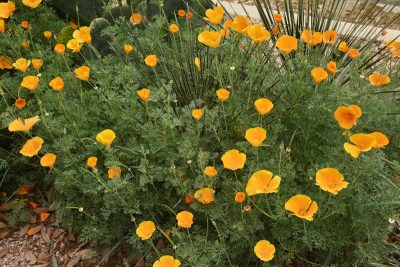Top Tree Questions
air date: January 13, 2018
When should you fertilize trees, when can you prune oaks susceptible to oak wilt, how do animals kill trees, and what’s the latest threat to crape myrtle trees? Mark Mann, ISA Certified Arborist with The Davey Tree Expert Company answers your top tree questions. Daphne identifies fuzzy growths on live oak trees and explains why they aren’t a problem. Zach Halfin, tree advocate, demonstrates fruit tree pruning at a Yard to Market Co-op workshop. On tour, a young family in LaGrange grows fruit, food, and fun. Plant of the Week is golden California poppy for early spring’s busy bees.

